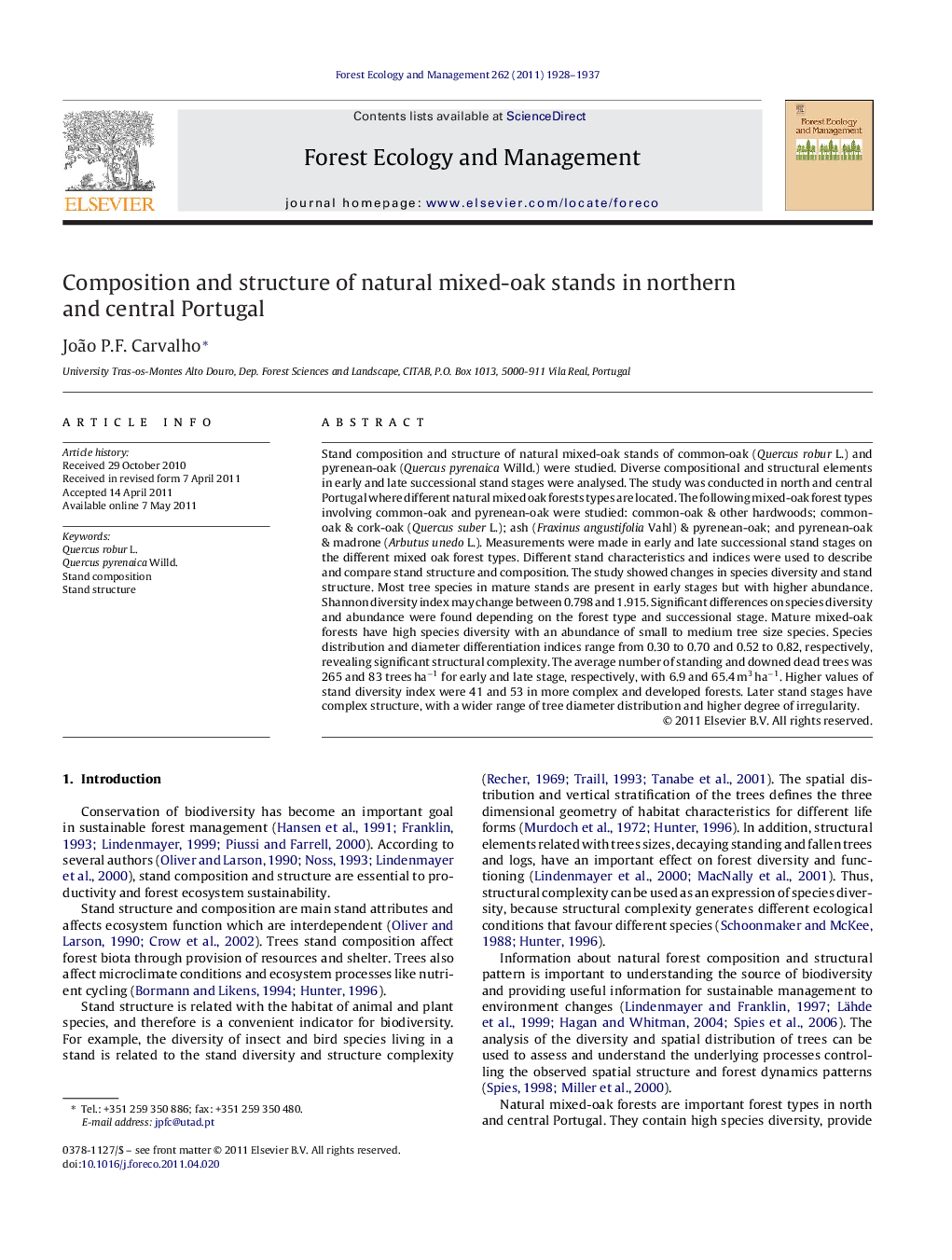| کد مقاله | کد نشریه | سال انتشار | مقاله انگلیسی | نسخه تمام متن |
|---|---|---|---|---|
| 87660 | 159261 | 2011 | 10 صفحه PDF | دانلود رایگان |

Stand composition and structure of natural mixed-oak stands of common-oak (Quercus robur L.) and pyrenean-oak (Quercus pyrenaica Willd.) were studied. Diverse compositional and structural elements in early and late successional stand stages were analysed. The study was conducted in north and central Portugal where different natural mixed oak forests types are located. The following mixed-oak forest types involving common-oak and pyrenean-oak were studied: common-oak & other hardwoods; common-oak & cork-oak (Quercus suber L.); ash (Fraxinus angustifolia Vahl) & pyrenean-oak; and pyrenean-oak & madrone (Arbutus unedo L.). Measurements were made in early and late successional stand stages on the different mixed oak forest types. Different stand characteristics and indices were used to describe and compare stand structure and composition. The study showed changes in species diversity and stand structure. Most tree species in mature stands are present in early stages but with higher abundance. Shannon diversity index may change between 0.798 and 1.915. Significant differences on species diversity and abundance were found depending on the forest type and successional stage. Mature mixed-oak forests have high species diversity with an abundance of small to medium tree size species. Species distribution and diameter differentiation indices range from 0.30 to 0.70 and 0.52 to 0.82, respectively, revealing significant structural complexity. The average number of standing and downed dead trees was 265 and 83 trees ha−1 for early and late stage, respectively, with 6.9 and 65.4 m3 ha−1. Higher values of stand diversity index were 41 and 53 in more complex and developed forests. Later stand stages have complex structure, with a wider range of tree diameter distribution and higher degree of irregularity.
► Most species in old oak stands are present in early stages but with higher abundance.
► Natural mixed-oak later stages have a multimodal and descending dbh-distribution.
► Old mixed-oak stands have a wider range of dbh-distribution.
► Early stand structure is likely to be even-aged.
► High species diversity and structural complexity in natural mixed-oak forests.
Journal: Forest Ecology and Management - Volume 262, Issue 10, 15 November 2011, Pages 1928–1937